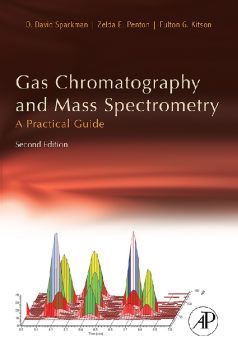
BOOK
Gas Chromatography and Mass Spectrometry: A Practical Guide
O. David Sparkman | Zelda Penton | Fulton G. Kitson
(2011)
Additional Information
Book Details
Abstract
The second edition of Gas Chromatography and Mass Spectrometry: A Practical Guide follows the highly successful first edition by F.G. Kitson, B.S. Larsen, and C.N. McEwen (1996), which was designed as an indispensible resource for GC/MS practitioners regardless of whether they are a novice or well experienced. The Fundamentals section has been extensively reworked from the original edition to give more depth of an understanding of the techniques and science involved with GC/MS. Even with this expansion, the original brevity and simple didactic style has been retained. Information on chromatographic peak deconvolution has been added along with a more in-depth understanding of the use of mass spectral databases in the identification of unknowns. Since the last edition, a number of advances in GC inlet systems and sample introduction techniques have occurred, and they are included in the new edition. Other updates include a discussion on fast GC and options for combining GC detectors with mass spectrometry.
The section regarding GC Conditions, Derivatization, and Mass Spectral Interpretation of Specific Compound Types has the same number of compound types as the original edition, but the information in each section has been expanded to not only explain some of the spectra but to also explain why certain fragmentations take place. The number of Appendices has been increased from 12 to 17. The Appendix on Atomic Masses and Isotope Abundances has been expanded to provide tools to aid in determination of elemental composition from isotope peak intensity ratios. An appendix with examples on "Steps to follow in the determination of elemental compositions based on isotope peak intensities" has been added. Appendices on whether to use GC/MS or LC/MS, third-party software for use in data analysis, list of information required in reporting GC/MS data, X+1 and X+2 peak relative intensities based on the number of atoms of carbon in an ion, and list of available EI mass spectral databases have been added. Others such as the ones on derivatization, isotope peak patterns for ions with Cl and/or Br, terms used in GC and in mass spectrometry, and tips on setting up, maintaining and troubleshooting a GC/MS system have all been expanded and updated.
- Covers the practical instruction necessary for successful operation of GC/MS equipment
- Reviews the latest advances in instrumentation, ionization methods, and quantitation
- Includes troubleshooting techniques and a variety of additional information useful for the GC/MS practitioner
- A true benchtop reference
- A guide to a basic understanding of the components of a Gas Chromatograph-Mass Spectrometer (GC-MS)
- Quick References to data interpretation
- Ready source for information on new analyses
"The authors have kept this book relevant and timely and have achieved their goal of providing useful information for practitioners. They understand what those who actually use GC/MS need, and continue to add appendixes of numerical information (increased from 12 to 17 in this revision)…The entire book has been updated and improved where needed; for example, chapter 6, covering the challenging topic of quantitation, has been "completely reworked." Sparkman and his collaborators continue to write high-quality books that are extremely useful, precise, and interesting to both novices and experienced scientists. Summing Up: Highly recommended. Upper-division undergraduates through professionals/practicioners."--CHOICE
